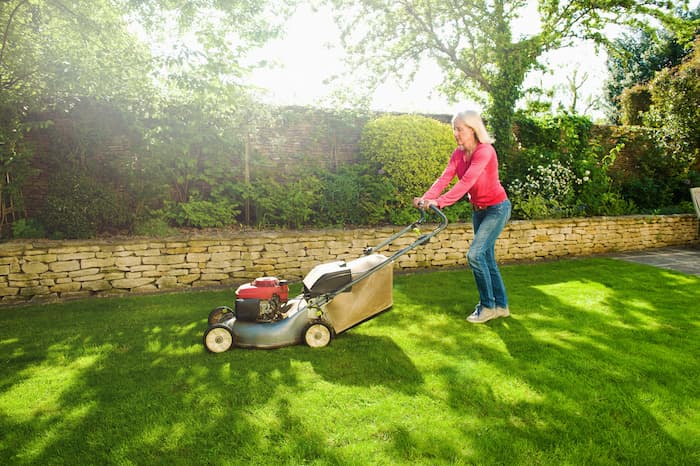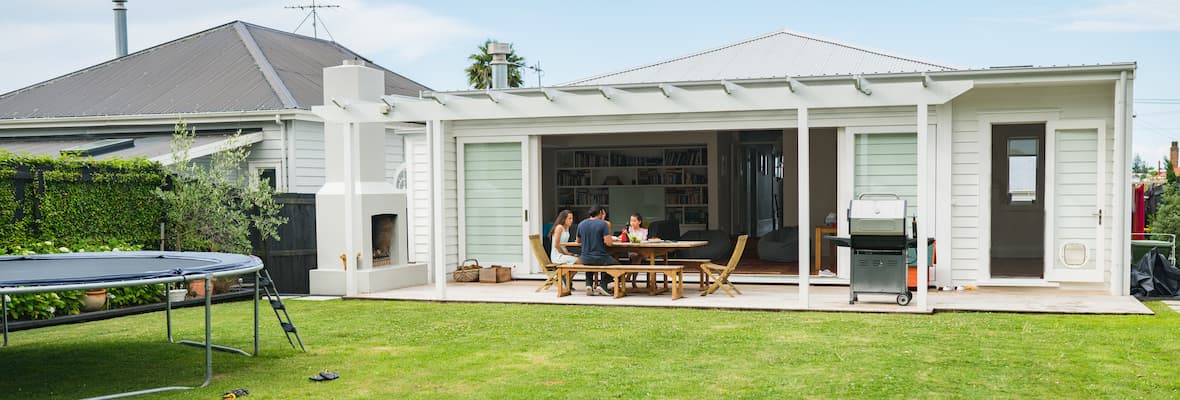Whether it's fresh turf or growing seeds, a healthy new lawn can completely transform a home.
But getting that picture-perfect grass is no easy task, especially for new homeowners. So to make sure your lawn stays healthy, dense and green, here are a few tips on everyday lawn care.
Getting Started
A healthy lawn can trap dust, dirt and smoke, reduce pollution, absorb noise and even cool down homes.
It’s also known to reduce crime by increasing green space which makes it harder for burglars to hide and even adds some serious value to your home – up to $110,000 in some cases.
To create a new lawn for your home you can use grass seed or lay turf. However, choosing a suitable grass type will likely depend on your circumstances.
How to Prepare Soil
Soil preparation is essential for growing a healthy, rich and sustainable lawn.
The ideal soil for laying turf or planting grass seed should be firm, weed-free and well-drained soil that’s clear of rocks, rubble, clay lumps and other debris.
A healthy new lawn needs a soil pH between 5.0 and 7.0 which can be found by doing a pH test.
You may need to add lime to the soil to correct the acidity if the pH is below 5.0 or gypsum or sulphur if the soil is too alkaline (pH above 7.5).
Soil should also be raked, weeded and levelled to create a firm surface before a pre-planting lawn fertiliser can be applied.
This rule similarly applies to veggie gardens where organically rich soil is vital to the survival of the garden.
How to Level a Lawn
Levelling should be one of the first steps taken before laying down new turf or sowing grass seed.
It also helps give the lawn proper drainage which then avoids puddles forming and reduces the chance of hard-to-remove weeds and mosses.
To level, you can rake or attach a heavy piece of board to a rope and drag it across the turned soil.
Your soil should be turned over to a depth of around 15 cm. This means with turf typically around 25 mm, it’ll be slightly higher than paths or edges.
On steep slopes, you might be better off laying turf instead of trying your luck with seed since a good downpour can wash your grass seeds away.
How to Grow Grass from Seed
With so many lawn varieties, it's important to choose the right grass seed to suit your environment and lawn use.
Warm-season grasses are usually most common in Australia as they're suited to the hotter climates. These can include Couch, Kikuyu, Buffalo grass and Zoysia.
First, rake the soil in straight lines, creating shallow furrows then spread a lawn-starter fertiliser to encourage germination.
Separate your grass seed into two equal amounts. To get an even distribution, spread the first batch in one direction and the second at right angles to the first.
Once the grass seed is down, cover them by lightly raking the surface of the soil. Water the area twice a day with fine mist spray until the seedlings have taken hold.
Your lawn should take about eight weeks to become established. Make sure there's little to no foot traffic in the area during this time.
How to Lay Turf
Choosing to lay turf is often the easiest option to create an instant lawn for some homeowners.
After finding out how much turf you'll need by measuring your land space, you can use turf delivery from certain landscaping businesses to lay instant turf.
Lightly water the turf underlay soil to prepare. The turf should either be supplied as turf rolls or slabs.
Without kneeling on it, lay the slabs or roll the turf out in a staggered brick pattern so the short ends of the rolls aren’t aligned in a straight edge. Push the individual strips together firmly without overlaps, gaps or stretching.
Start at the outer edges of the yard and work towards the centre so you don’t have smaller pieces of turf on the perimeter where they tend to dry out.
Cutting turf should only be done with a sharp knife or secateurs – never rip it. And if you’re laying turf on a slope, plant it across the slope otherwise water can run down between rolls and wash away the soil underneath.
Once the turf is laid, you want to saturate the grass mat immediately to wet the soil underneath to activate the fertiliser and prevent it from drying out.
After plenty of water, you should roll the newly laid turf out with a lawn roller. Some lawn rollers come with spikes for aeration or reservoirs for water, but any handheld 45 kg roller should do the job.
Rolling helps to even out any small bumps, firms down the turf, squeezes out any air pockets and helps bond the grass roots to the soil.

Maintaining Your Lawn
After your lawn has been laid, you should be watering it every day for the first four to six weeks, depending on the temperature and weather conditions, and keeping everyone off the surface for at least a month.
For new grass seeds, the level of watering depends on the grass type. But in general, all grass needs to be kept moist constantly while it's being established.
Grass in super hot, dry climates needs more water, so this could mean watering up to four times a day to make sure the roots take hold.
Around three weeks after laying turf, the ground should start to firm and you can water it slightly less, but water deeply to encourage deep root growth.
Once your lawn is established, it can be mowed to 2.5 cm for warm-season grasses and 4 cm for cold-season grasses.
The rule for a healthy lawn is to mow frequently and not too deeply. The first mow after the lawn is established should use the highest setting on the mower to only remove the tips of the grass.
Regular mowing helps strengthen the lawn’s root system to achieve robust growth and fresh green colour.
You might get away with mowing every five weeks or so in winter, but a healthy summer lawn may need mowing as often as once a fortnight.
Ongoing watering is best done in the morning to provide deep, thorough and occasional soakings, rather than quick sprays that don’t reach the roots.
When to Fertilise a Lawn
About one month after you lay turf, you should fertilise your new lawn and use a complete lawn food.
It’s important to use a correctly balanced lawn fertiliser during the active growing season and remember that frequent light fertilising is always better than a heavy, once-in-a-blue-moon approach.
How to Aerate a Lawn
Aeration breaks down the soil beneath your grass to let air, water and nutrients reach the roots and support their growth.
For smaller areas like home lawns, aeration sandals which have spikes on the bottom can be used to puncture holes in the ground as you walk. Alternatively, you can use a sturdy garden fork.
The best time to aerate warm-season grasses is during spring and summer when they’re in their active growth stage.
Aerating in the cooler months isn’t recommended because there’ll be a longer recovery time and it could impact the health of your lawn.
Those with a heavy clay base should aerate at least once a year and those with sandy loam soil can prolong it to once a year or once every two years. Meanwhile, lawns in harsher climates or with heavier foot traffic might need it twice a year.

How to Dethatch a Lawn
Dethatching helps to remove the thick layer of decaying surface from your lawn so air, water, nutrients and fertilisers can reach the soil and your lawn can drain better.
You’ll generally know it’s time to dethatch your lawn when the surface starts to feel spongy.
You can dethatch by:
Mowing low or gradually reducing the height of your mower with a few mows to reduce the layer of thatch in your lawn.
Using a dethatching rake to pull dead matter from out of the ground in a less invasive way.
Using a specialised dethatching machine to make light work of removing the thatch layer.
How to Get Rid of Weeds
There are a few ways to remove weeds both before your lawn is laid and after it's up and running.
A pre-emergent weed killer targets weeds before they’ve had the chance to germinate and this is best done in autumn or winter.
Selective weed killers are safe to use on some grass types and actually feed your lawn while killing weeds. They’re typically best used in springtime when weeds would have already appeared.
Non-selective weed killers basically kill everything, including existing vegetation. They’re incredibly effective in killing weeds, but you have to be very careful where you apply the spray in the turf area to make sure your lawn is protected.
For natural options, vinegar or boiling water can also be effective in killing weeds, while manual removal with a weeding tool or just your hands can also work.






